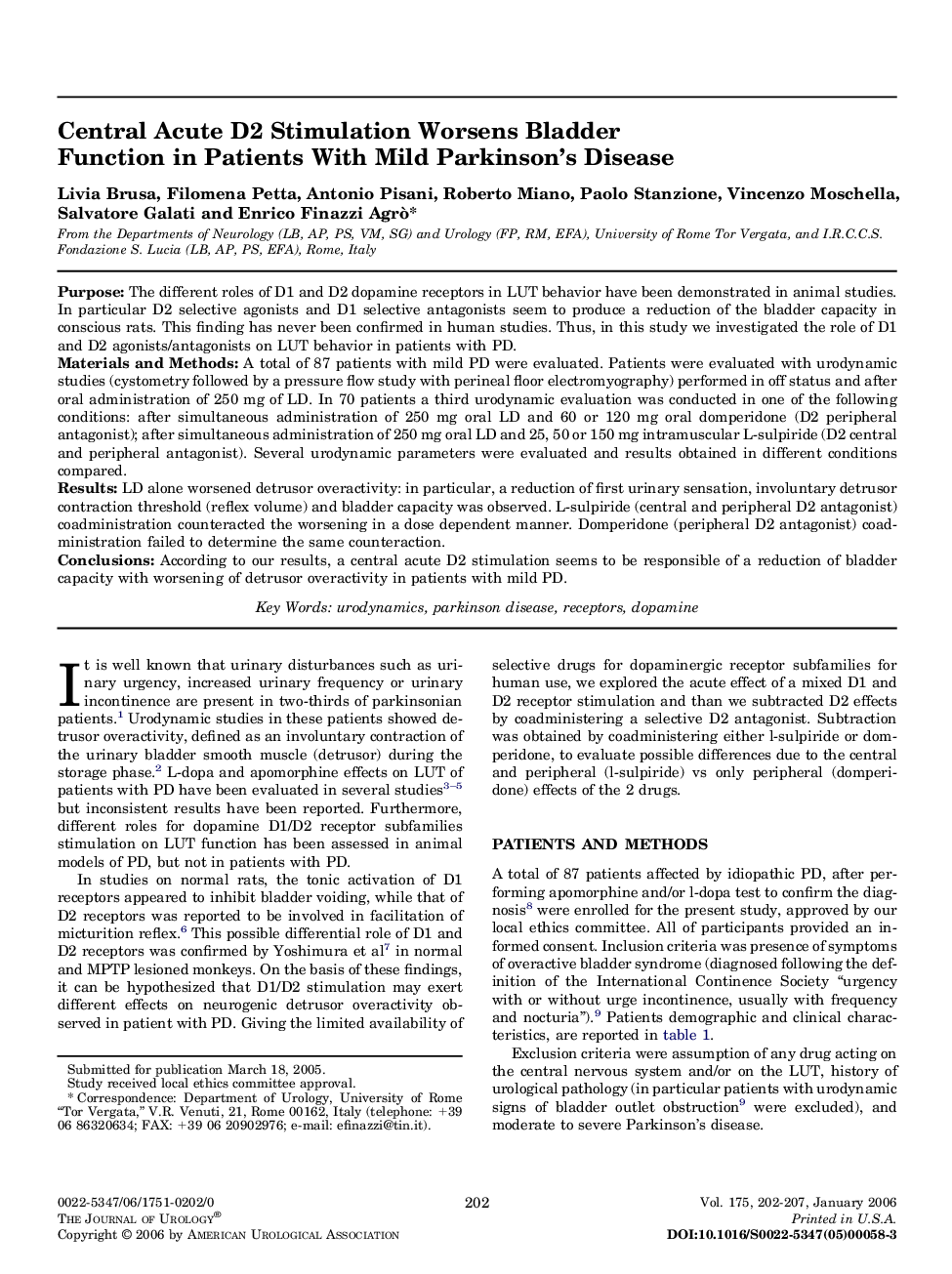| Article ID | Journal | Published Year | Pages | File Type |
|---|---|---|---|---|
| 3880348 | The Journal of Urology | 2006 | 5 Pages |
PurposeThe different roles of D1 and D2 dopamine receptors in LUT behavior have been demonstrated in animal studies. In particular D2 selective agonists and D1 selective antagonists seem to produce a reduction of the bladder capacity in conscious rats. This finding has never been confirmed in human studies. Thus, in this study we investigated the role of D1 and D2 agonists/antagonists on LUT behavior in patients with PD.Materials and MethodsA total of 87 patients with mild PD were evaluated. Patients were evaluated with urodynamic studies (cystometry followed by a pressure flow study with perineal floor electromyography) performed in off status and after oral administration of 250 mg of LD. In 70 patients a third urodynamic evaluation was conducted in one of the following conditions: after simultaneous administration of 250 mg oral LD and 60 or 120 mg oral domperidone (D2 peripheral antagonist); after simultaneous administration of 250 mg oral LD and 25, 50 or 150 mg intramuscular L-sulpiride (D2 central and peripheral antagonist). Several urodynamic parameters were evaluated and results obtained in different conditions compared.ResultsLD alone worsened detrusor overactivity: in particular, a reduction of first urinary sensation, involuntary detrusor contraction threshold (reflex volume) and bladder capacity was observed. L-sulpiride (central and peripheral D2 antagonist) coadministration counteracted the worsening in a dose dependent manner. Domperidone (peripheral D2 antagonist) coadministration failed to determine the same counteraction.ConclusionsAccording to our results, a central acute D2 stimulation seems to be responsible of a reduction of bladder capacity with worsening of detrusor overactivity in patients with mild PD.
